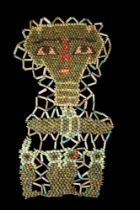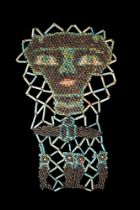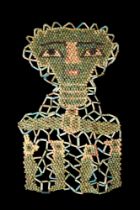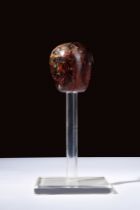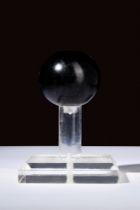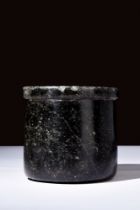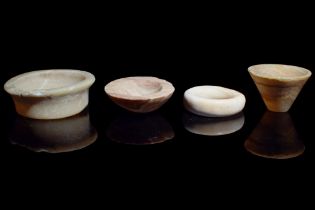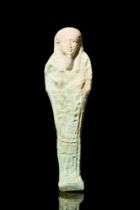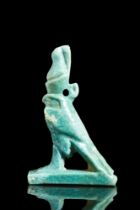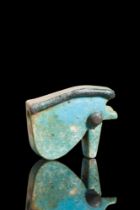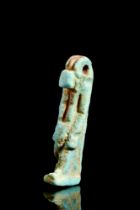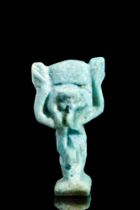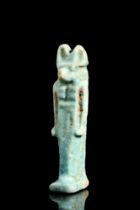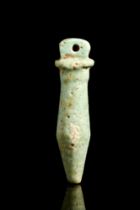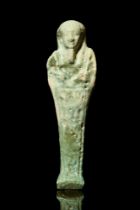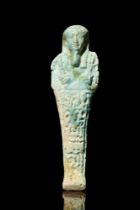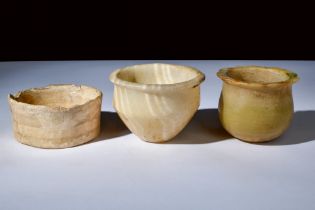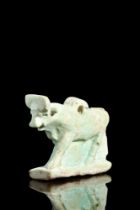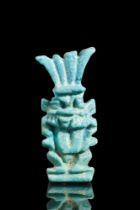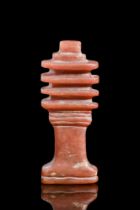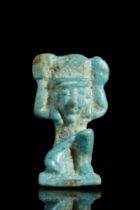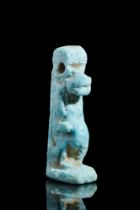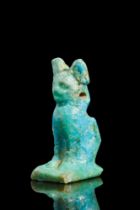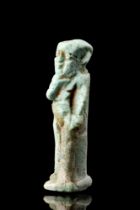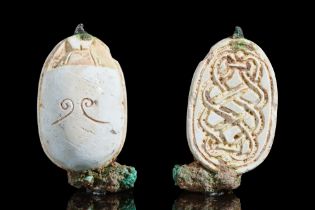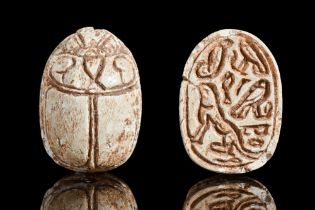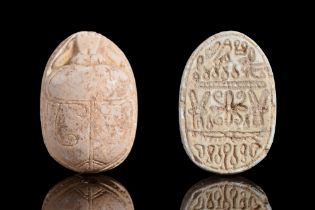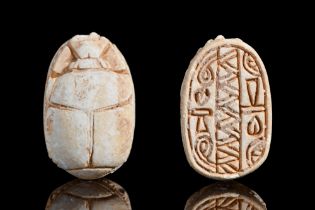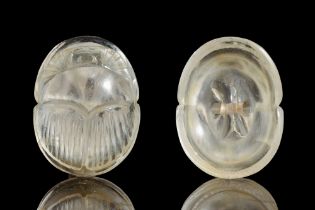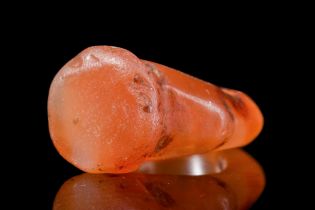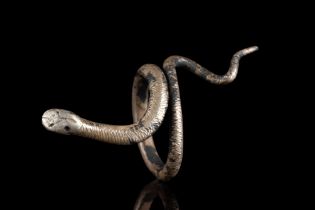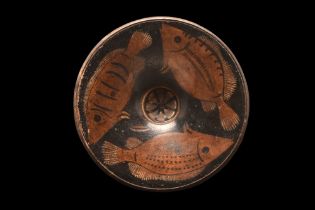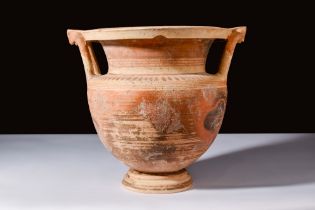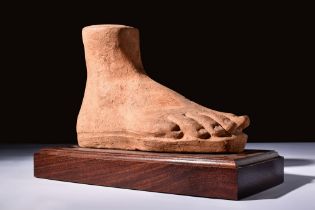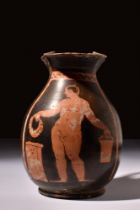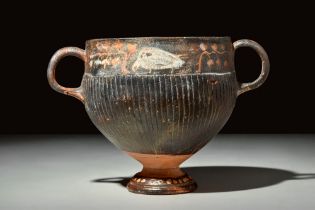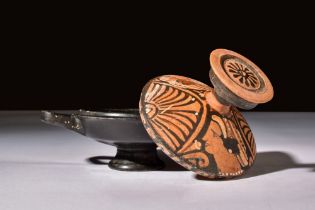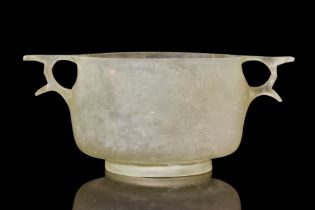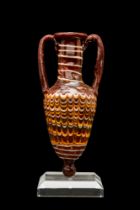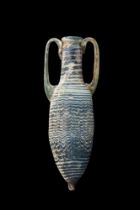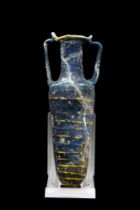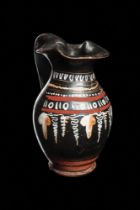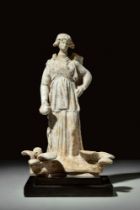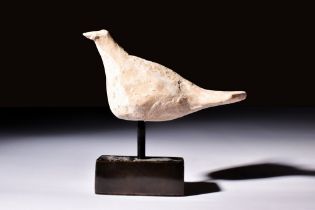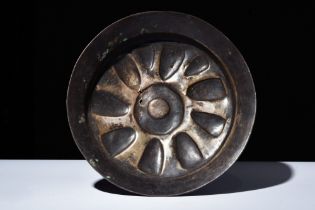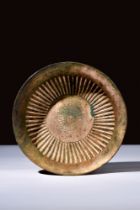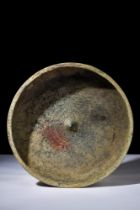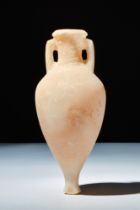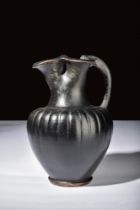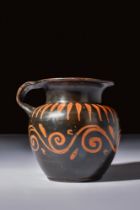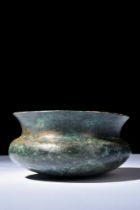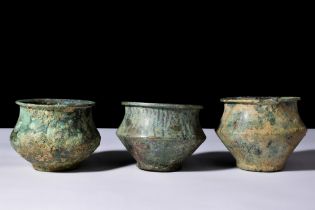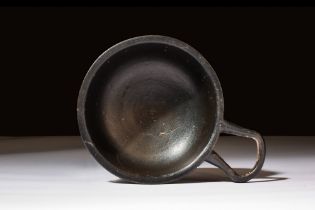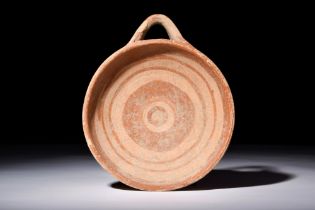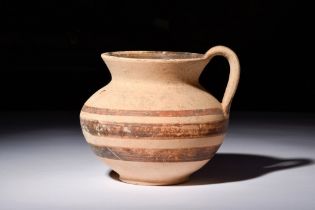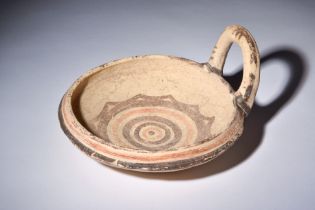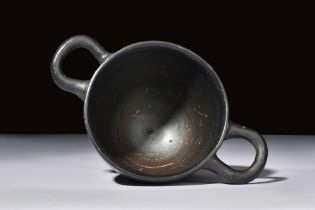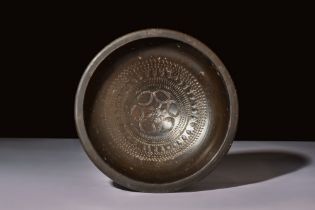Verfeinern Sie Ihre Suche
Schätzpreis
Kategorie
- Schmuck (89)
- Griechische, Römische, Ägyptische & andere Antiquitäten (84)
- Waffen, Rüstungen & Militaria (52)
- Skulpturen (42)
- China (34)
- Keramik, Fayencen (30)
- Glas & Kristall (29)
- Historische Baustoffe & Elemente (23)
- Großuhren (22)
- Bücher, Manuskripte & Schriften (18)
- Varia (14)
- Metalle (8)
- Islam (7)
- Präparate & Naturkundliches (6)
- Wissenschaftliche Instrumente (6)
- Vintage Fashion (5)
- Silber & Versilbertes (4)
- Ethnographie & Stammeskunst (3)
- Küchenutensilien (3)
- Münzen (3)
- Spielzeug, Modelle & Puppen (3)
- Sport Memorabilia & Equipment (3)
- Lampen (2)
- Oldtimer, Motorräder & Automobile (2)
- Porzellan (2)
- Textilien (2)
- Druckgrafiken & Multiples (1)
- Indien (1)
- Möbel (1)
- Werkzeug (1)
- Zeichnungen & Pastelle (1)
Künstler / Marke
Lostyp
- Ring (54)
- Bowl (22)
- Gold Ring (22)
- Anhänger (22)
- Figure (18)
- Intaglio (18)
- Schwert (18)
- Vessel (17)
- Halskette (16)
- Gold Pendant (15)
- Axe (14)
- Beads (12)
- Silver Ring (12)
- Round (10)
- Amulet (9)
- Band (9)
- Garnet (8)
- Scarab (8)
- Helme (7)
- Dagger (6)
- Flask (6)
- Plate (6)
- Speer (6)
- Bottle (5)
- Buddha (5)
- Bust (5)
- Becher (5)
- Figurine (5)
- Grenade (5)
- Jar (5)
- Krater (5)
- Ohrringe (4)
- Glass Bottle (4)
- Jug (4)
- Mask (4)
- Skyphos (4)
- Spearhead (4)
- Bracelet (3)
- Brooch (3)
- Chain (3)
- Chain Necklace (3)
- Messer (3)
- Lampe (3)
- Shabti (3)
- Terracotta Figure (3)
- Amphora (2)
- Armour (2)
- Beaker (2)
- Brooches (2)
- Button (2)
- Cameo (2)
- Kerzeleuchter (2)
- Gericht (2)
- Emerald (2)
- Flares (2)
- Gemstone (2)
- Glass Candlestick (2)
- Glassware (2)
- Kantharos (2)
- Kyathos (2)
- Paramerion� (2)
- Patera (2)
- Perlen (2)
- Perfume Bottle (2)
- Phiale (2)
- Scabbard (2)
- Ushabti (2)
- Vase (2)
- Adze (1)
- Blunt (1)
- Bridge (1)
- Carving (1)
- Chalice (1)
- Truhe (1)
- Cloisonne (1)
- Club (1)
- Säule (1)
- Corinthian Helmet (1)
- Cups (1)
- Tür (1)
- Falcata (1)
- Glass Jug (1)
- Glass Plate (1)
- Gold Bar (1)
- Knives (1)
- Brief (1)
- Lintel (1)
- Mace (1)
- Model (1)
- Becher (1)
- Noble (1)
- Öl Lampe (1)
- Olpe (1)
- Säule (1)
- Topf (1)
- Robe (1)
- Skulptur (1)
- Shawl (1)
- Shield (1)
- Shiva (1)
- Tisch (1)
- Tiles (1)
- Turquoise (1)
- Urne (1)
- Liste
- Galerie
Ein Abonnement der Preisliste ist notwendig um Ergebnisse, von Auktionen die vor einem längeren Zeitraum als 10 Tagen stattgefunden haben, ansehen zu können. Klicken Sie hier für mehr Informationen
Late Period, ca. 664-332 BC.A mummy shroud made of faience beads with a detailed face, a winged scarab, and the four Sons of Horus. The face is re...
Late Period, ca. 664-332 BC.A finely crafted funerary shroud adorned with faience beads depicting the deceased's face, a winged scarab, and the fo...
Late Period, ca. 664-332 BC.A faience beaded funerary shroud portrays the face of the deceased with beige, ochre, and crimson beads. A winged scar...
Predynastic Period, Ca. 3500 - 3200 BC.A tear-shaped ancient Egyptian macehead carved from red hardstone with black veins. The piece is pierced fo...
Predynastic Period, Naqada II, 3500-3200 BC.A globe-shaped mace head made of beautiful grey hematite with a smooth surface and a drilled socketing...
EGYPTIAN BASALT JAR
Early Dynastic Period, Ca. 1st - 2nd Dynasty, Ca. 3000-2650 BC..A cylindrical shaped jar with a flat base and an everted rounded rim. For similar ...
EGYPTIAN MINIATURE STONE VESSELS
OLD KINGDOM, Ca. 2345-2181 BC.A set of four miniature stone vessels made with precision. They hold significance in Egyptian culture, often buried ...
EGYPTIAN FAIENCE SHABTI
Late Period, 30th Dynasty, Ca. 380-343 BC.An ancient Egyptian blue faience ushabti. The mummiform figurine wears a tripartite wig, crossed hands t...
Late Dynastic Period, Ca. 664-332 BC.A faience amulet of Horus shaped like a falcon with a flat base, prominent eyes, facial markings, a small rou...
Ca. 1069-332 BC.A blue glazed faience Wedjat eye amulet, also called the Eye of Horus, with a flat underside. It represents a human eye with a bro...
Late Period, Ca. 664-332 BC.A glazed amulet of the goddess Tawaret, depicted standing with arms at her pregnant belly, on a base with a back pilla...
EGYPTIAN FAIENCE SHU AMULET
Late Period, Ca. 664-332 BC.A blue faience amulet of the air god Shu is depicted kneeling with one knee on the ground and the other raised. His ar...
Late Period, Ca. 664-332 BC.A blue faience amulet of Anubis, a god associated with death and the afterlife. He is depicted striding forward with h...
Late Period, Ca. 664-332 BC.A papyrus column amulet, known as Wadj sceptre, made of light blue glazed faience with a suspension hole. This amulet ...
EGYPTIAN FAIENCE SHABTI
Late Period, 30th Dynasty, Ca. 380-343 BC.An ancient Egyptian greenish/blue glazed faience shabti of a mummified form, standing on a plinth. He is...
EGYPTIAN FAIENCE SHABTI
Late Period, 30th Dynasty, Ca. 380-343 BC.A greenish/blue glazed faience shabti of mummified form on a rectangular plinth. The figure is depicted ...
New Kingdom, Ca. 1550-1070 BC.A set of three ancient Egyptian alabaster vessels. Shallow round bowl and two bulbus shaped bowls with carved rims. ...
Late Period, Ca. 664-332 BC.A faience amulet of the bull Apis, symbolising divine connection in ancient Egypt. The amulet depicts a standing bull ...
EGYPTIAN FAIENCE AMULET OF BES
Late Period, Ca. 664-332 BC.A deep blue faience amulet of the god Bes, a dwarf with a feather crown and distinctive features, standing with his ha...
New Kingdom, Ca. 1550 BC-1069 BC.A Djed pillar amulet made from carnelian, symbolising stability in ancient Egyptian culture. It features horizont...
EGYPTIAN FAIENCE AMULET OF SHU
Late Period, Ca. 664-332 BC.A light blue faience amulet depicting Shu, the air god, in a kneeling pose with one knee touching the ground and the o...
Late Period, Ca. 664-332 BC.An amulet of the goddess Taweret in turquoise faience. Depicted as a hippopotamus with pendulous breasts and a pregnan...
Late Period/Ptolemaic, Ca. 712-30 BC.A faience amulet of the goddess Bastet in a cat form with a loop for suspension. Bastet, often depicted as pa...
Ca. 664-332 BC.A light blue glazed faience amulet representing the Harpocrates, also known as Horus the child. The god strides upon a rectangular ...
Ca. 1650-1550 BC.A fine steatite scarab with naturalistic features including clypeus and prothorax marked by incised lines. Two fine lines with sw...
EGYPTIAN STEATITE SCARAB
Ca. 712 - 343 BC.A steatite scarab with naturalistic features including clypeus and prothorax marked by incised lines. The reverse consisting of I...
EGYPTIAN STEATITE SCARAB
Ca. 1650-1550 BC.A scarab formed of steatite with naturalistic features including clypeus and prothorax marked by incised lines. The reverse has b...
EGYPTIAN STEATITE SCARAB
Late Period, Ca. 664-332 BC.An ancient Egyptian steatite scarab, inscribed on the base with a geometric pattern and two flanking ankhs the symbol ...
AN EGYPTIAN ROCK CRYSTAL SCARAB
Late Period, Ca. 6640-332 BC.A naturalistically carved scarab formed of transparent rock crystal with prominent eyes, ribbed plates and clypeus or...
EGYPTIAN CARNELIAN RING
New Kingdom, Ca. 1550-1070 BC..A carnelian finger ring, with round hoop and intergaro round bezel. Size: D:12.9mm / US: 1 1/2 / UK: C; 5.93g Prove...
Ca. 100 BC-100 AD.A silver ring in the form of a coiled serpent with finely detailed scales and realistic features. The serpent symbolises renewal...
APULIAN RED-FIGURED FISH PLATE
Ca. 400-300 BC.A shallow ancient plate, decorated with three sea breams swimming around the central recess for garum (fish sauce). For similar see...
Ca. 300-200 BC.A pottery column krater with round base, concave foot, handles on shoulder, and a flat rim. Decorated with drop motifs on the shoul...
Ca. 600 BC.A moulded salmon-coloured pottery votive foot, depicted with very naturalistic toes and form. Vent hole at the top. The foot is resting...
APULIAN RED-FIGURE OINOCHOE
Ca. 350 BC.An Apulian red-figure oinochoe with a round body, ring base, and trefoil-shaped spout. It features a sturdy handle at the back. The fro...
GNATHIAN POTTERY KANTHAROS
Ca. 280 BC.A pottery kantharos exhibiting a ribbed black-glazed body, rising from a simple base, with two handles. It features a painted bird on a...
Ca. 340-325 BC.A terracotta red-figure lekanis consisting of a black-glazed footed dish with two opposing handles and a flange to receive the lid ...
RARE GREEK CUT GLASS SKYPHOS
Ca. 100-200 BC.A pale yellow-green in color, cast, lathe-cut and polished, the hemispherical body on an outsplayed ring foot, the ring handles wit...
Ca. 300-200 BC.An elegant core-formed glass amphoriskos with a pear-shaped body and two tall arched handles. the neck is decorated with a white sp...
Ca. 200 BC.A deep blue and white core-formed glass amphoriskos with a tapered body decorated with a fine overall bluish-white marvered feather pat...
Ca. 200-100 BC.A Hellenistic core-formed glass amphoriskos, with dark blue and yellow trails in a banded pattern. Size: L:130mm / W:50mm ; 80g Pro...
GNATHIAN WARE TREFOIL OINOCHOE
Magna Graecia, Ca. 350 BC.A decorated pottery oinochoe with a trefoil lip and a strap handle. Decorated with white and ocher-painted tendrils and ...
CANOSAN POTTERY LEKYTHOS FIGURE
Ca. 300 BC.A pottery figure depicticing a woman standing in contrapposto and wearing a tightly-wrapped himation over a long chiton. The drapery's ...
Ca. 300 BC.A set of three pottery birds. One is round, with a small head and flaring tail. The second is depicted as if in flight, and the smalles...
CANOSAN POTTERY BIRD
Ca. 300 BC.A pottery model of a standing bird with small head, and short beak. The piece is an excellent example of Canosan pottery. Size: L:53mm ...
GREEK SILVER PHIALE
Ca. 500 BC.A silver phiale elegantly shaped with a shallow curve that widens at the top. It has a central knob surrounded by ten almond-shaped lob...
GREEK HELLENISTIC BRONZE PHIALE
Ca. 400 BC.An ancient phiale, crafted from speculum, a reflective bronze alloy. It has a shallow, flaring body with a decorative radial pattern. A...
GREEK BRONZE BOWL
Ca. 500-400 BC.A bronze bowl featuring a wide, shallow body with a flat base. The vessel is adorned with a raised central boss encircled by intric...
Ca. 300 BC.An alabaster amphoriskos perfume bottle with a tapering body, sharp shoulder and twin flattened angular handles. For similar see: Chris...
Ca. 400 BC.A black-glazed pottery vessel with a globular, rounded and ribbed body swelling out from a low ring foot. The lip is pinched into a tre...
ANCIENT GREEK POTTERY XENON MUG
South Italy, Apulia, Ca. 400 BC.A black-glazed pottery mug with an austere design featuring a flat base, inverted piriform body, short neck, and a...
ETRUSCAN BRONZE VESSEL
Ca. 700-600 BC.A bronze vessel with a broad neck and flared lip that rests upon a bulbous lower body adorned with stunning patina. Size: L:70mm / ...
ANCIENT GREEK BRONZE BOWL
Ca. 400 BC.A broad bronze libation bowl with a raised centre and a thick rim. Size: L:60mm / W:290mm ; 1.43kg Provenance: Property of a West Londo...
Ca. 600-500 BC.A group of three bronze vessels with similar shapes and beautiful green patina. Size: L:80-85mm / W:118-118mm ; 885g Provenance: Pr...
Ca. 400-300 BC.A black glazed cup with a round body, flared foot, and looped handle. Size: L:45mm / W:85mm ; 74.3g Provenance: Property of a centr...
DAUNIAN POTTERY KYATHOS
Ca. 400 BC.A ceramic kyathos with a rounded, shallow bowl and a side loop handle. Ochre concentric bands decorate the inner bowl and rim. Size: L:...
DAUNIAN POTTERY OLPE
Ca. 500 BC.A beautiful olpe with a bulbous body, round mouth, and single arching handle. It features decorative brown slip bands. Size: L:105mm / ...
DAUNIAN POTTERY KYATHOS
Ca. 500 BC.A terracotta kyathos with a hemispherical body and arched handle, featuring bichrome-painted decoration. It served practical purposes f...
ATTIC BLACK-GLAZED SKYPHOS
Ca. 350 BC.A black glazed skyphos with a sleek body, two curvilinear handles, and a lustrous black glaze, typical of ancient Greek pottery. Skypho...
CAMPANIAN BLACKWARE BOWL
Magna Graecia, Ca. 350 BC.A black-glazed pottery bowl with decorative elements, including a central floral design, palmette leaves, and ovoid link...

